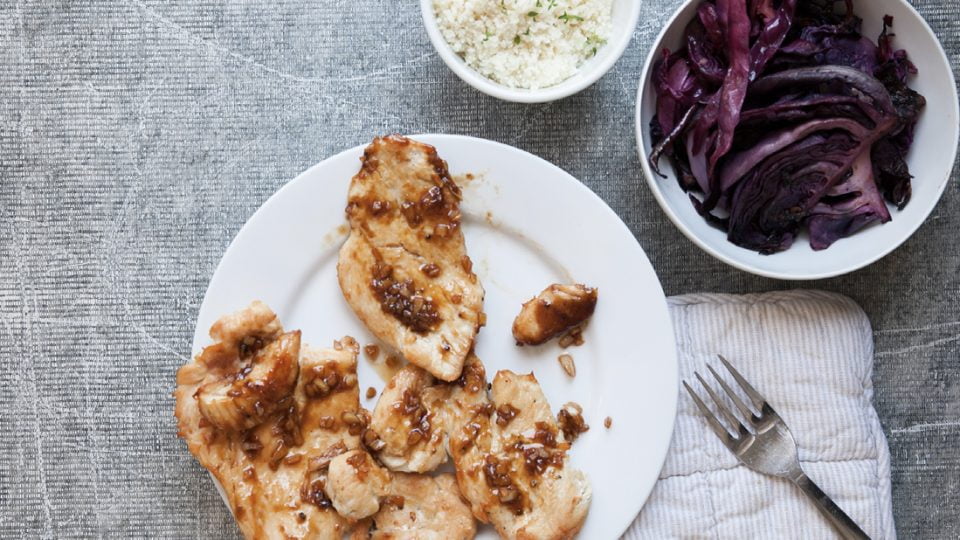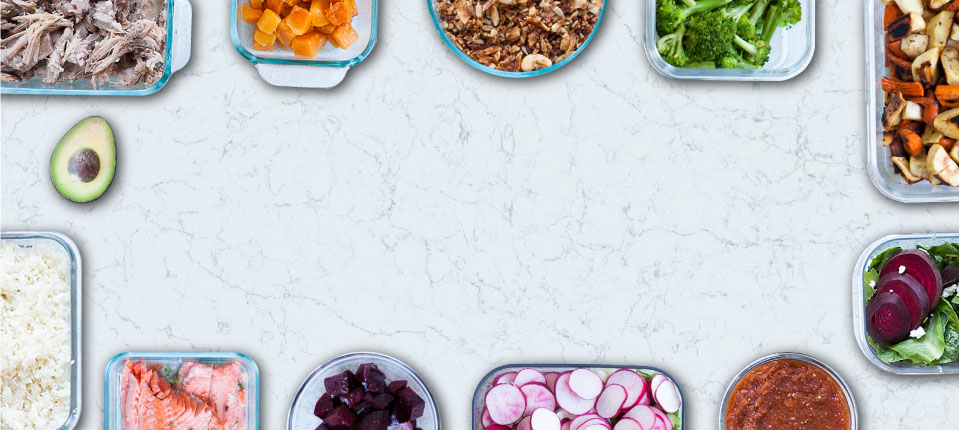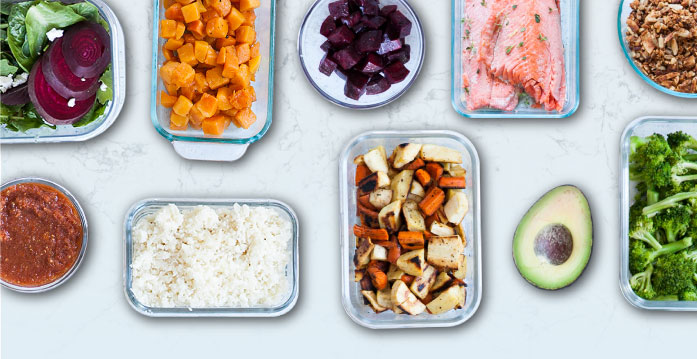Cross your fingers and hope it works. If you don't know how to meal plan , this might be your nightly mantra. Your family might eat the same thing over and over again. Or maybe dinnertime is a flurry of flavors that don’t quite work together.
Extra spicy nachos followed by ice cream, anyone? Yeah, it has happened to best of us.
If most of your meals come out of your kitchen – or, you’d like them to – set yourself up for success. When you know what you’re making every day of the week, last-minute trips to the grocery store are a thing of the past. And cooking becomes enjoyable – not a mad rush to feed your tribe.
Fortunately, the real food community is filled with good advice from foodie bloggers. Guaranteed, these ten tips on how to meal plan will make your food spectacular and your life a little easier.
#1 – Start with meat
Whether your week begins on a Sunday or a Monday, if you’re wondering how to meal plan: Begin with skin-in-tact, bone-in meat. A large cut – or bird – that will serve you well for a few days.
As DaNelle explains on her blog, Weed ‘Em & Reap,
If you purchase a whole chicken then you’ll be able to roast said chicken and have a delicious meal, then you can take the leftover meat and make a casserole-like dish the NEXT day, then you can use the bones to make a broth for a soup the NEXT day.
#2 – Get honest about your budget
Organic produce, free-range eggs, wild-caught seafood, and dairy sourced from grass-fed animals are better for your health.
These foods also tend to cost more at the grocery store.
The basics of how to meal plan involve setting aside some time to figure out what you’d like to spend on food and where it’s okay to cut corners.
Once you’re honest with yourself about your budget and your health goals, swing by Autoimmune Paleo and read Mickey Trescott’s tips about how to meal plan on a budget. For example, she covers which foods to take priority in quality and which specialty foods are better made at home.
#3 – Let your kid loose in the kitchen
As it turns out, most kids love to help. Whether it’s sweeping, chopping, or stirring – they want to do what you do.
So, let them.
Chances are, they’ll be more likely to eat food that they had a hand in making.
Katie, a mother of 6 who blogs over at Wellness Mama, explains:
I recommend finding ways to involve your children more in food prep and cooking and they will likely be much more willing to eat healthy foods that they have helped to prepare.
#4 – Get on your favorite farmer’s email list
Ah, the digital age. Most businesses and farmers have an email list, to which they’re happy to add you. Lisa over at 100 Days of Real Food suggests staying abreast of what’s in season by checking in with your favorite farmers and subscribing to their newsletters.
You’ll know which fruits and vegetables to plan your meals around. And because this involves shopping for what’s in season, you’ll save a little cash too.
#5 – Serve up some brinner
If you’re looking for time-saving tips on how to meal plan, Lindsey at Homemade Mommy recommends that you prepare breakfast – instead of dinner – one night of the week.
Brinner. It’s a colorful frittata as the sun sets. Or an evening filled with bacon, eggs, and a side of pancakes. Breakfast for dinner means easy, nutrient-rich solutions to (sometimes) tedious pre-dinner prep.
#6 – Don’t start from zero
Knowing how to meal plan involves knowing how to synchronize food prep with your daily life. On the Kitchn, Cambria Bold shares this little pearl of wisdom: The whole point is not to start from zero every night.
When you have a few minutes to spare, stow away cleaned salad greens and chopped vegetables so that they’re easy to pluck from the refrigerator and use. Spiralize your zoodles. Create your own spice blends in bulk – dry roasting spices like cinnamon, cumin, and fennel.
You want to have what you need at your fingertips before you need it.
#7 – Put a rainbow on your plate
Food – especially food that comes from plants – is beautiful. Fruit and vegetables will soften the expense of pricey items like high-quality meat, dairy, and eggs. Besides that, colorful food is delicious and full of compounds that do good things for your health.
If you’re wondering how to meal plan while hitting all your nutritional bases, celebrate color.
Whether it’s raw, fermented, roasted, blended, or even hidden in your favorite protein. To get you started, scoop up Mel Joulwan’s tips on how to eat more veggies.
#8 – Get rid of the guesswork
Three words: Meal planning templates. They make life easier. Period.
You can get rid of the guesswork around how to meal plan by simply having a template and following it.
Steph Gaudreau suggests changing up ingredients while sticking to one type of meal each day of the week. For example:
- Sunday – Big cook day, remember to start with meat
- Monday – Leftover meat, for example, these Beef Barbacoa Bowls or Fiesta Enchiladas
- Tuesday – Soup, made with leftover bones from Sunday’s big cook – like this Green Chicken Posole Soup
- Wednesday – Put your haul from the farmer’s market or CSA box to good use
- Thursday – Seafood, like these Fried Fish
- Friday – Brinner, try this Tomato Bacon Quiche (DF) or Paleo Waffles with Maple Chicken Breakfast Sausage (AIP)
- Saturday – Pizza! Like this Sweet Potato, Kale and Goat Cheese Pizza
#9 – Carry real food snacks
According to paleo expert Dr. Sarah Ballantyne, there are three foods you should always carry: nuts, sardines, and dried fruit.
If you’d rather not crack open a can of sardines while driving or running errands, bring along meat jerky or another easy-to-use source of protein.
In a pinch, these foods can stave off hunger or prevent a toddler’s meltdown. And you won’t need to sacrifice nutrition for convenience.
#10 – Find your flow
Besides getting some of your meal prep done ahead of time, get in the habit of spending a few extra minutes knowing your food prep schedule. This will help to clear up confusion around how to meal plan – and make it sustainable.
This means making your meal plan work for you.
For example, maybe you need to marinate a protein for several hours, so you throw it together before leaving for work. Easy! Or maybe like Michelle Tam, you purposefully make plenty of leftovers that can be repurposed into school lunches for the next day. Knowing what you need – and when – saves you time and energy in the kitchen.


